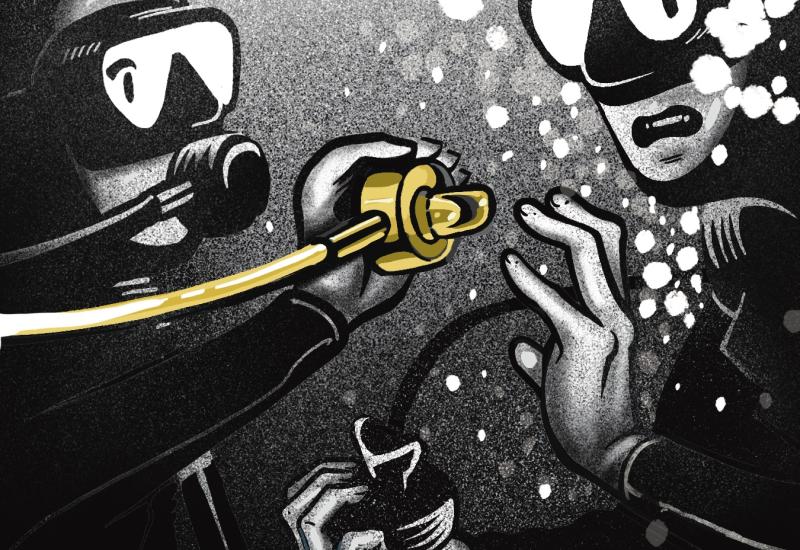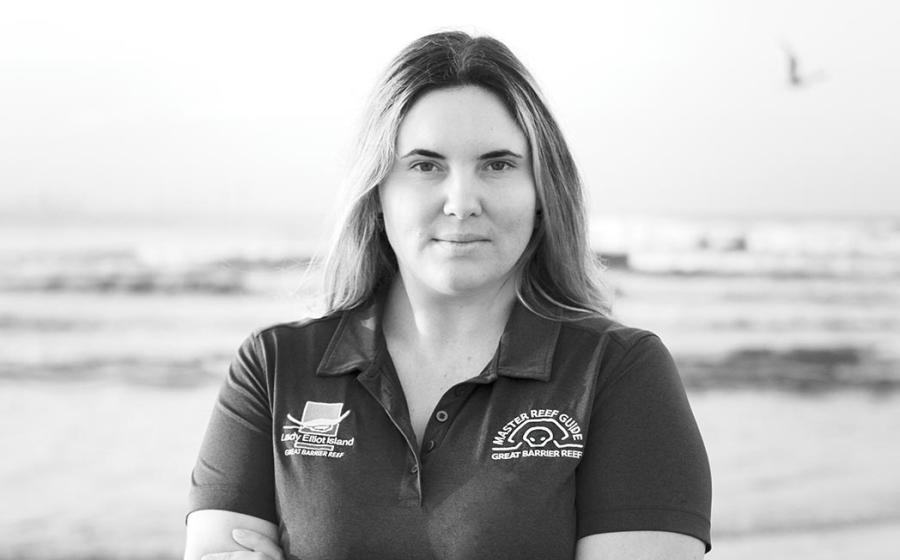A Warning for Dive Instructors
November 2000
Setting the Stage
Ed.'s note: The incidents described here are real. Names of locations and people have been changed or deleted.
Mary, a middle-aged school teacher with children, had been a certified scuba diver for several years, but had done very little diving since her training course. Her boyfriend, George, was taking an open-water certification course, and she accompanied him on his open-water training dives. The dive site was a shallow, protected area--there were no waves, the water was warm and there was a mild current, if any.
Mary had come without a certified buddy, so George's two instructors, Fred and Sally, told her that she needed to find a buddy. They told Mary they could not take on the responsibility of watching her, because their first obligation was to their students. A pair of certified divers offered to have her join them, but she declined the offer. During the briefing, the boat's skipper asked all the divers if anyone needed a buddy. Mary did not respond.
The Dive
Fred entered the water and went to the bottom to wait for the students, while Sally supervised the entries from the deck. When the last student was in, Sally joined Fred and they completed a 30-minute training dive with their students.
Mary apparently entered the water by herself, intending to tag along with the training dive. At the end of the training dive, it was discovered that she was missing. After some 90 minutes of searching, she was found nearby on the bottom in shallow water, her tank almost full, mask around her neck and little or no air in her BC. It was also observed that she was significantly overweighted.
Legal Action
Mary's family sued the dive boat, dive instructors and the dive store that sponsored the trip. The plaintiffs' allegations included: 1) failure to assign buddies, 2) failure to supervise, 3) failure to account for all divers, and 4) failure to rescue.
A jury found the instructors 50 percent liable for Mary's death and Mary herself 50 percent liable.
Among the things that complicated the trial were:
-
The dive boat was relieved of any liability, as Mary had signed a waiver for the boat. She did not sign waivers for the instructors.
-
The judge did not allow into evidence the fact that Mary had undergone psychiatric treatment, used medications and was prone to panic.
-
The plaintiffs' experts were able to assert that there is a standard of care that dive instructors must act as "scuba police" and directly control the behavior of certified scuba divers, and that it is a violation of the standard of care for an instructor not to receive the "OK" sign from a diver after entering the water.
-
The defense was unable to convince the jury that drowning was the cause of death, not the cause of the accident. To the diving community, it's clear that some other factor or incident must cause an accident that then leads to drowning.
-
It was very likely that Mary was medically unfit to dive and an arrythmia led to her death.
Cases like this one are making two things clear: 1) how the American legal system can be used to arrive at unjust conclusions, and 2) that dive instructors should not allow divers to tag along on training or tour dives. Either the divers sign up, complete a waiver, compensate the instructor and follow the dive plan, or the instructor should have nothing to do with the diver.
Lessons for Life
-
You should dive only when medically, physically, mentally and emotionally fit.
-
If you choose to dive alone, take responsibility for yourself; be self-sufficient. Realize that if you have a medical emergency while alone, there will be no one there to help you.
-
If you ever have an emergency that cannot be handled or solved under water, become positively buoyant by inflating your BC, ditching your weights or both. Rescue or help is far more likely when you are on the surface.
-
Diving is far easier and safer if you adjust your weights for the diving conditions at the particular time and place of your dive.
November 2000
Setting the Stage
Ed.'s note: The incidents described here are real. Names of locations and people have been changed or deleted.
Mary, a middle-aged school teacher with children, had been a certified scuba diver for several years, but had done very little diving since her training course. Her boyfriend, George, was taking an open-water certification course, and she accompanied him on his open-water training dives. The dive site was a shallow, protected area--there were no waves, the water was warm and there was a mild current, if any.
Mary had come without a certified buddy, so George's two instructors, Fred and Sally, told her that she needed to find a buddy. They told Mary they could not take on the responsibility of watching her, because their first obligation was to their students. A pair of certified divers offered to have her join them, but she declined the offer. During the briefing, the boat's skipper asked all the divers if anyone needed a buddy. Mary did not respond.
The Dive
Fred entered the water and went to the bottom to wait for the students, while Sally supervised the entries from the deck. When the last student was in, Sally joined Fred and they completed a 30-minute training dive with their students.
Mary apparently entered the water by herself, intending to tag along with the training dive. At the end of the training dive, it was discovered that she was missing. After some 90 minutes of searching, she was found nearby on the bottom in shallow water, her tank almost full, mask around her neck and little or no air in her BC. It was also observed that she was significantly overweighted.
Legal Action
Mary's family sued the dive boat, dive instructors and the dive store that sponsored the trip. The plaintiffs' allegations included: 1) failure to assign buddies, 2) failure to supervise, 3) failure to account for all divers, and 4) failure to rescue.
A jury found the instructors 50 percent liable for Mary's death and Mary herself 50 percent liable.
Among the things that complicated the trial were:
The dive boat was relieved of any liability, as Mary had signed a waiver for the boat. She did not sign waivers for the instructors.
The judge did not allow into evidence the fact that Mary had undergone psychiatric treatment, used medications and was prone to panic.
The plaintiffs' experts were able to assert that there is a standard of care that dive instructors must act as "scuba police" and directly control the behavior of certified scuba divers, and that it is a violation of the standard of care for an instructor not to receive the "OK" sign from a diver after entering the water.
The defense was unable to convince the jury that drowning was the cause of death, not the cause of the accident. To the diving community, it's clear that some other factor or incident must cause an accident that then leads to drowning.
It was very likely that Mary was medically unfit to dive and an arrythmia led to her death.
Cases like this one are making two things clear: 1) how the American legal system can be used to arrive at unjust conclusions, and 2) that dive instructors should not allow divers to tag along on training or tour dives. Either the divers sign up, complete a waiver, compensate the instructor and follow the dive plan, or the instructor should have nothing to do with the diver.
Lessons for Life
You should dive only when medically, physically, mentally and emotionally fit.
If you choose to dive alone, take responsibility for yourself; be self-sufficient. Realize that if you have a medical emergency while alone, there will be no one there to help you.
If you ever have an emergency that cannot be handled or solved under water, become positively buoyant by inflating your BC, ditching your weights or both. Rescue or help is far more likely when you are on the surface.
Diving is far easier and safer if you adjust your weights for the diving conditions at the particular time and place of your dive.










